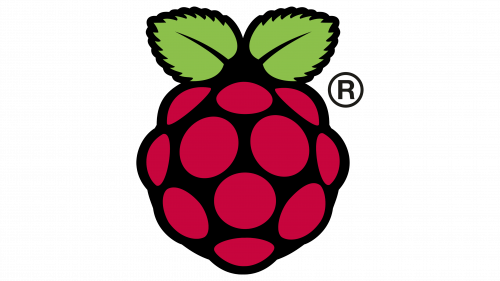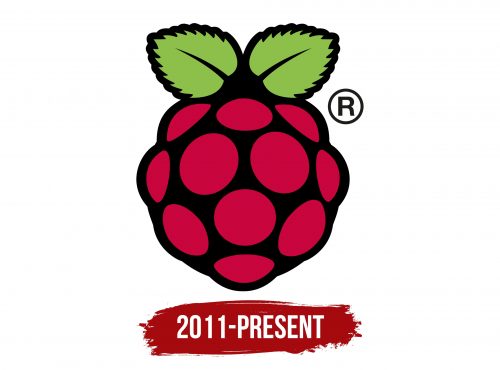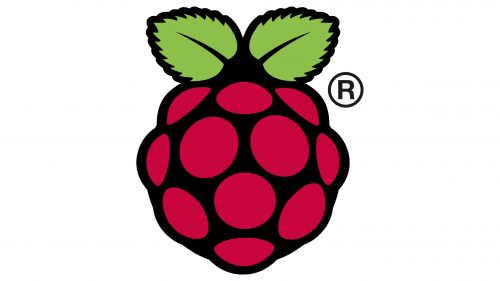The Raspberry Pi logo symbolically draws a parallel between the process of learning programming and computer science and the beneficial doses of vitamins found in fruits and berries. This imagery emphasizes that mastering technology can be just as essential and nourishing for the mind as vitamins are for the body. The emblem also reflects the idea of compactness and convenience, visually conveying that this is a small device designed for easy storage and processing of information.
Raspberry Pi: Brand overview
The story of the Raspberry Pi began in 2006 at the University of Cambridge in the UK. Eben Upton, a computer science professor, noticed that fewer students with strong programming skills were entering the program. He believed this decline was due to the lack of affordable computers that young people could use to experiment and learn to code. Inspired by early home computers like the Commodore 64, Amiga, and BBC Micro, Upton envisioned a low-cost, high-performance computer to teach programming. Along with Jack Lang, Pete Lomas, and Alan Mycroft, Upton founded the Raspberry Pi Foundation to make this idea a reality.
The prototypes, developed in 2006, were about the size of a USB stick and featured the Atmel ATmega644 microprocessor. While limited in functionality, these early models laid the foundation for future development.
In 2008, advances in mobile processing technology allowed the team to rethink their product, which led to more powerful ARM processors and the use of the Linux operating system. This move significantly boosted performance while keeping costs low.
2011 was a breakthrough year. Raspberry Pi Trading Ltd. was formed in May, and by the end of the year, the first alpha boards were released for testing. These boards attracted the attention of developers and tech enthusiasts alike.
The first commercial version, the Model B, launched on February 29, 2012, at just $35. This credit card-sized computer featured a 700 MHz ARM11 processor, 256 MB of RAM, and the ability to play 1080p video. Demand was so high that distributor websites crashed.
In April 2012, the Model A was introduced at an even lower price of $25. It featured less RAM and no Ethernet port, making it a budget-friendly option for educational purposes.
In 2014, the Model B+ was released with added features such as improved audio, four USB ports, and better energy efficiency. The Model A+ followed soon after, offering a smaller, more power-efficient version.
2015 was a transformative year. In February, the Model 2 B was introduced with a quad-core ARM Cortex-A7 processor and 1 GB of RAM, marking a substantial leap in performance. In November, the Raspberry Pi Zero, a $5 model, was launched, attracting the embedded systems community due to its size and versatility.
In 2016, the 3 Model B added built-in Wi-Fi and Bluetooth, making it even more versatile and popular for various applications, from hobby projects to desktop computing.
The Zero W, released in 2017, brought wireless capabilities to the original Zero, making it ideal for wireless-based projects.
The 3 Model B+, released in 2018, offered further performance enhancements. By then, the foundation had sold over 19 million units, making it the UK’s best-selling computer.
In 2019, the 4 Model B launched with support for dual 4K displays, up to 4GB of RAM, and significantly improved CPU and graphics performance, solidifying its place as the most powerful model in the lineup.
In 2020, the Raspberry Pi 400 was released. It combines a complete computer with a keyboard—a nod to the home computers of the 1980s. It was designed for ease of use, particularly in education and home computing.
In 2021, the foundation introduced its first microcontroller, the Pico, based on the RP2040 chip. It became popular in the maker and electronics communities, opening new possibilities for smaller, embedded projects.
The Pico W, launched in 2022, added Wi-Fi functionality to the Pico, expanding its potential in networked projects.
By 2023, the Raspberry Pi ecosystem had grown to include various hardware, accessories, software, and educational resources. The organization remained dedicated to making computers and digital technologies accessible to everyone, regardless of income or technical expertise.
Over a decade, what started as a modest educational project evolved into a global phenomenon, transforming how people learn about computing and electronics. Devices from this family are now used in schools, research labs, businesses, and even space, showcasing the platform’s versatility and impact.
Meaning and History
What is Raspberry Pi?
This compact and affordable single-board computer line revolutionized the world of DIY electronics and programming education. These devices, the size of a credit card, allow users to create projects of varying complexity — from simple robotic systems to advanced coding tasks, offering the functionality of a full-fledged computer in a miniature format. The input/output system enables integration with various sensors, motors, and electronic components, making them highly flexible. They are suitable for beginners and advanced users, supporting multiple operating systems and programming languages. These computers are used in various fields, from scientific research and industrial control to retro gaming and home automation systems.
2011 – today
The Raspberry Pi emblem features a large, juicy raspberry in a cartoon style. This bright image visually grabs attention and directly references the brand’s name. The choice of raspberry as a symbol follows the tradition of many IT companies using fruits and berries in their names, such as Apple, Acorn, Tangerine Computer Systems, and Apricot Computers. Raspberry Pi continues this tradition, adding its unique meaning.
The name “Pi” stands for Python Interpreter, highlighting one of the mini-computer’s key goals—teaching programming, particularly in Python. This focus on educational objectives has made the brand popular among beginner programmers and tech enthusiasts worldwide.
The logo is designed in vibrant colors. The red raspberry symbolizes creativity and innovation, particularly important for a product aimed at learning and experimentation in programming. Each circle on the berry can be seen as a metaphor for memory cells, emphasizing that the company is not a “toy” but a serious tool for working with data and computations.
The two green leaves at the top of the raspberry symbolize the growth and development of the brand. This can also be interpreted as a nod to the device’s environmental friendliness and energy efficiency, a key feature of the Raspberry Pi mini-computer, which consumes minimal power.
The black outline and base of the emblem add seriousness and formality. Despite the cartoon style, the logo underscores the professional approach to creating the device. The single-board computer was not designed for entertainment but for work, education, and serious projects.





